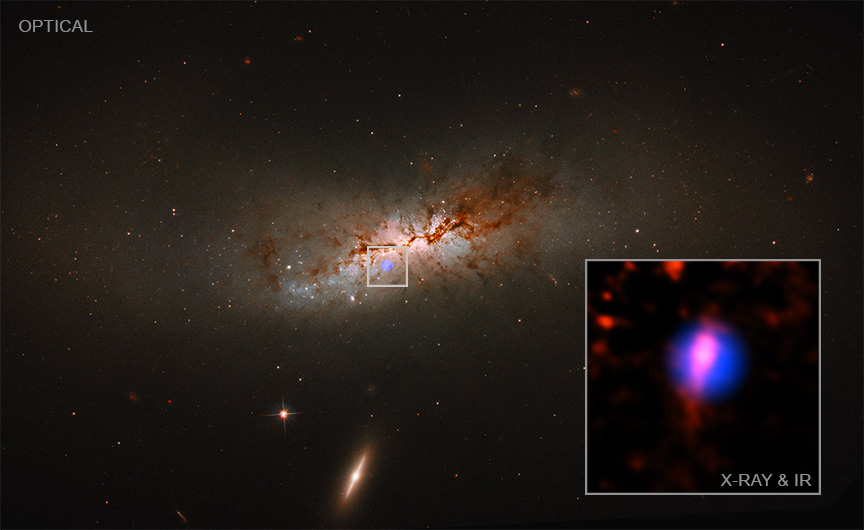NASA telescopes see a smaller galaxy potentially delivering large black hole to another galaxy

- Country:
- United States
Using two of NASA's powerful observatories - Chandra X-ray Observatory and Hubble Space Telescope - astronomers may have witnessed how a smaller galaxy potentially delivered a large black hole to another, larger galaxy.
The elongated red object in the above picture (inset) is a cluster of stars nicknamed Nikhuli, which is likely the center of a small galaxy that has had most of its stars stripped away as it collides with the larger galaxy NGC 4424. Nikhuli is about 1,300 light-years from the center of NGC 4424, or about 20 times closer than the Earth is to the Milky Way's giant black hole.
NGC 4424 is a spiral galaxy that lies about 54 million light-years from Earth in the Virgo galaxy cluster. The center of this galaxy is expected to host a large black hole estimated to contain a mass between about 60,000 and 100,000 Suns. The inset features a close-up view of NGC 4424 that shows Chandra X-Ray data (blue), as well as infrared data from Hubble (red) that has had infrared light from a model of NGC 4424 subtracted from the image to show other faint features.
Astronomers may have witnessed a galaxy's #BlackHole delivery system in action! A new study using Chandra & @NASAHubble shows how a large black hole may have been delivered to the spiral galaxy NGC 4424 by another, smaller galaxy. More on the discovery: https://t.co/NWhU11esJy pic.twitter.com/b872tTJX7a
— Chandra Observatory (@chandraxray) August 18, 2022
"One possible explanation for the Chandra X-ray source in the inset is that matter from Nikhuli is falling rapidly into a stellar-mass black hole. However, because these smaller black holes are expected to be rare in a cluster the size of Nikhuli, the authors argue it is more likely from material falling slowly onto a more massive black hole weighing between about 40,000 and 150,000 Suns. These results imply that Nikhuli is likely acting as a delivery system for NGC 4424’s supply of black holes, in this case bringing along a massive one," NASA said in a statement.










